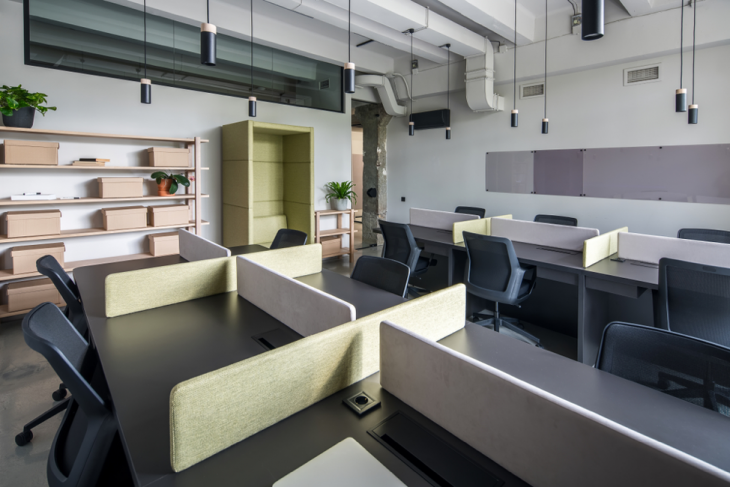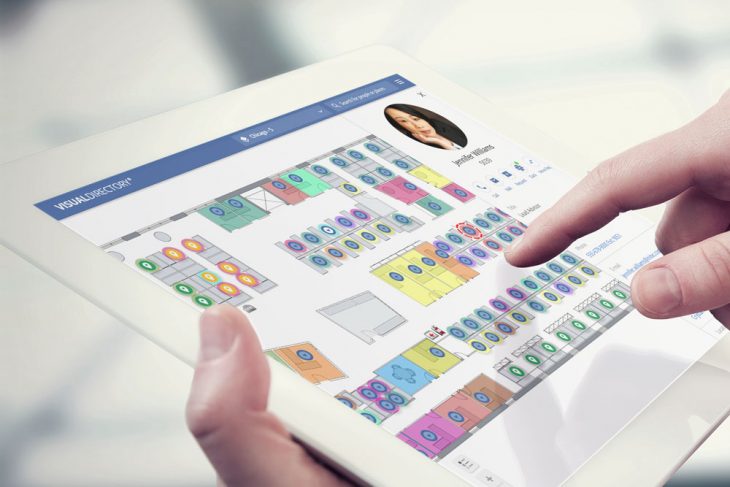Today’s workplace problems have more available solutions than ever before, so common office challenges can be addressed in a way that works best for everyone.
At its core, technology exists to make things easier. We leverage software to do everything from managing executive meetings to scheduling routine office maintenance. But for many businesses, it can be deceptively easy to adopt workplace technology that accidentally goes against the grain of company culture. Rather than complementing the existing company values, a poor tech fit can ultimately leave businesses with a product they don’t use, or, at worst, can be a catalyst for frustration.
When sifting through available tech solutions, it’s important to take your people and their habits and processes into consideration — the goal is to improve on existing strengths without creating new hurdles. The good news is, today’s workplace problems have more available solutions than ever before, so common office challenges can be addressed in a way that works best for everyone. Here are the office pain points I hear most often, and my recommended steps for putting your best tech foot forward.
Problem 1: We Want to Optimize Our Office Space Without Spending More on Real Estate
The conundrum of office real estate is a tough one to solve, and something most organizations have wrestled with at one time or another. The balancing act lies in finding a design that maximizes space efficiency and employee comfort without leaning too far to either side.
In my experience, there are several ways to use the latest technology to do more with the space you have. You may want to start by collecting sensor data to see how your existing spaces are being used. Sensors that generate occupancy data can give stakeholders a clearer picture of which spaces are sitting idle at what times of day, and provide better visibility into how rooms are being used and by how many people.
A second option I’d suggest testing out is advanced desk booking and hot desking, solutions that work wonders when a competent software platform is in place to handle reservations, requests, and assignments for everyone involved in the chain. Offering employees increased choice in where they sit may turn up space solutions you hadn’t originally considered. And hot desking can easily lead into the rising trend of remote and flexible work solutions, where tech liberates your employees to log in from almost anywhere.
Whether you opt for sensors, hot desking, remote work, or a combination of all three, these tactics have real transformative potential in a space-cramped office — and the right software goes a long way to ensuring whatever solution you choose suits your company culture.
Problem 2: We Need a Wayfinding and Room Booking Solution
Depending on the size of your organization, wayfinding can feel like a niche issue. But as companies grow and sprawling campuses and office moves become the norm, helping your people and visitors get where they need to go can be a time-saving measure that lifts the burden of directing from your facility management team.
Here, I’ve seen the flexibility of the right Integrated Workplace Management System (IWMS) make wayfinding efficient and seamless. Choose a modern IWMS that makes any mounted tablet or screen a wayfinding kiosk, using the same software facility managers used to generate office floor plans to begin with. This technology can free teams to find each other after a move, and help new hires track down resources or HR.
Supplement your kiosks with apps that integrate with your IWMS so that employees can take their wayfinding mobile. Making your space management solutions available in the apps your employees already rely on — such as Slack or Skype — can go a long way in limiting frustration, and empowering teams to book rooms on the fly means that meetings can happen whenever the need arises. Comprehensive IWMSs mean there’s no need for your IT team to develop this functionality from the ground up — the best options come fully supported and ready out of the box.
There’s no reason to let an unfamiliar space impact productivity or culture; with tools that integrate with the software they’re already familiar with, employees can navigate your office like old pros from day one.
Problem 3: We Need a Better Way to Plan and Manage Moves in Our Office
Move management is a notoriously time-consuming task, whether it’s overseeing a transition to an entirely new building or orchestrating internal office moves and desk reassignments. Regardless of scope, office moves can represent a significant hassle if the right people aren’t given access to the right tools.
One key piece of the puzzle in smoothing out the move process is seat allocation software, which can make it easier for facility managers and other stakeholders to execute seating decisions in a way everyone involved can see. Planning scenario floor plans and building out future spaces becomes a matter of a few clicks, rather than assembling and updating elaborate spreadsheets.
The best seating software also accommodates employee requests and can send automated responses, taking the pressure off facility managers to make every single seating call. Move requests are tracked and documented in one central location, and seat changes happen and are reflected on floor plans in real time. These solutions allow managers to plan capacity, move team members and implement updates to floor plans in software suited to the task — far better, to my mind, than the chaos of paper-based systems or digital tools not up to the job.
Problem 4: We’re Not Effectively Managing Workplace Requests
Do your employees know what to do if they have a broken chair? If there’s a leak in the kitchen? How do team members make problems known and request a change? Can they track the response to their request? Is the system designed to handle facility requests? Is it built into other tools the company relies on or does it exist in a hard-to-access silo?
These questions — and their answers — can become urgent as companies go from small to sizable. What once took one person to manage can wind up taking many, across a range of skill sets. Collecting all workplace requests in one request management software solution, integrated with your existing IWMS, can take the headache out of scattered repair requests and facility tickets. If your business isn’t large enough yet to require a full-scale management system, clarifying an email system or adapting an IT ticketing process to organize building requests can be a stop gap, but won’t work in the long run. Either way, having a designated tech solution to the everyday issues of office upkeep can keep your spaces feeling fresh and your employees feeling supported.
There’s No Silver Bullet Solution
Every workplace has unique needs, processes, and — most importantly — people. Choosing and implementing technology that aligns with your existing environment will always be more effective than having to also change the habits of your employees.
An IWMS with an easy-to-adopt interface and integrations that fit in seamlessly with your existing systems is a fast track to addressing office needs without alienating your teams. After all, finding a tech solution that suits your company culture is a priority, not an option.
Photo Credits: Unsplash / Venveo, Shutterstock / bezikus, Shutterstock / GaudiLab, Shutterstock / tsyhun, Shutterstock / g-stockstudio







